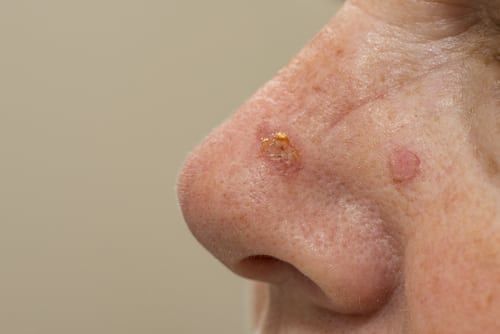Actinic keratosis (AKs) are precancerous skin lesions that if left untreated may evolve into squamous cell carcinomas. Typically, they occur in fair-skinned individuals after the skin has been badly damaged by ultraviolet (UV) rays from the sun or indoor tanning. Actinic keratosis is sandpaper-like rough, red spots. Patients feel them before they see them. Most often, they are found on the skin that is sun exposed: the forehead, ears, neck, arms, hands, lower lip, and bald scalps.
Prevention of actinic keratosis begins with avoiding prolonged sun exposure and using sunscreen. These measures should start in childhood, as the sun damage responsible begins in early life.
There are a number of treatment options available. Cryosurgery, or freezing of involved areas with a cold spray made of liquid nitrogen, is the first line for patients with few lesions. For widespread actinic keratosis, field therapy is the treatment of choice and includes topical medications (chemotherapeutics, immunomodulatory and other agents) applied at home, as well as in-office procedures using lasers, photodynamic therapy, and chemical peels.






